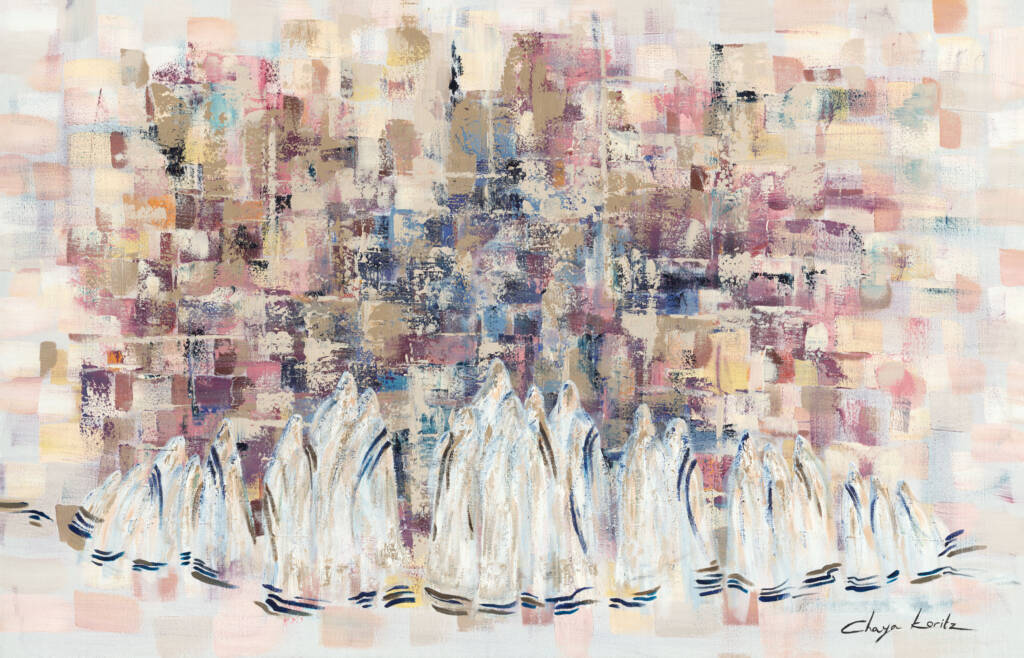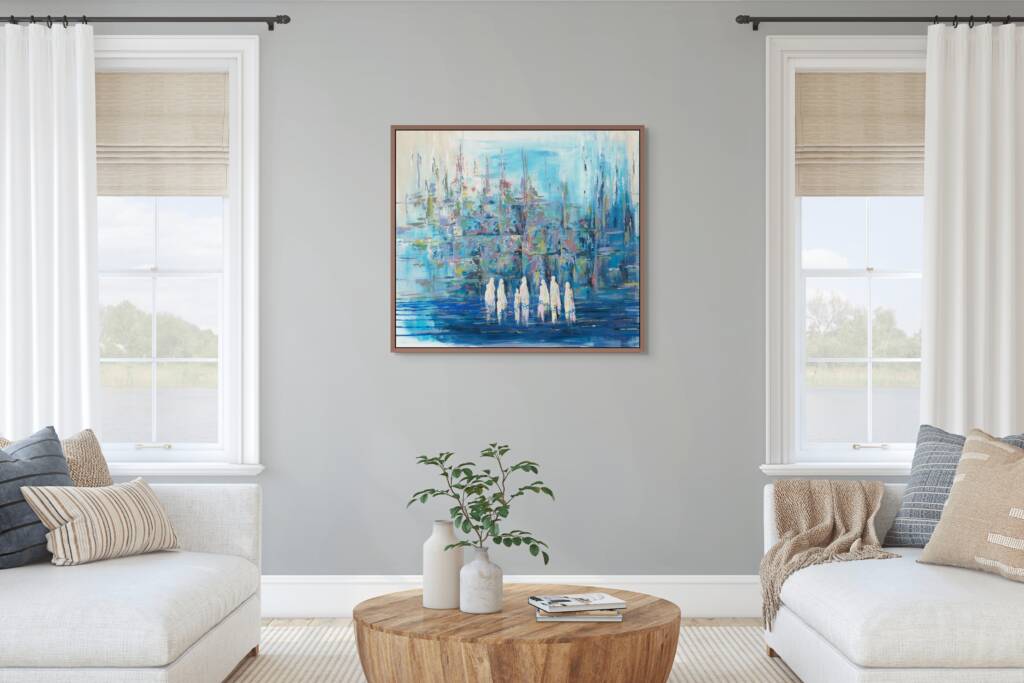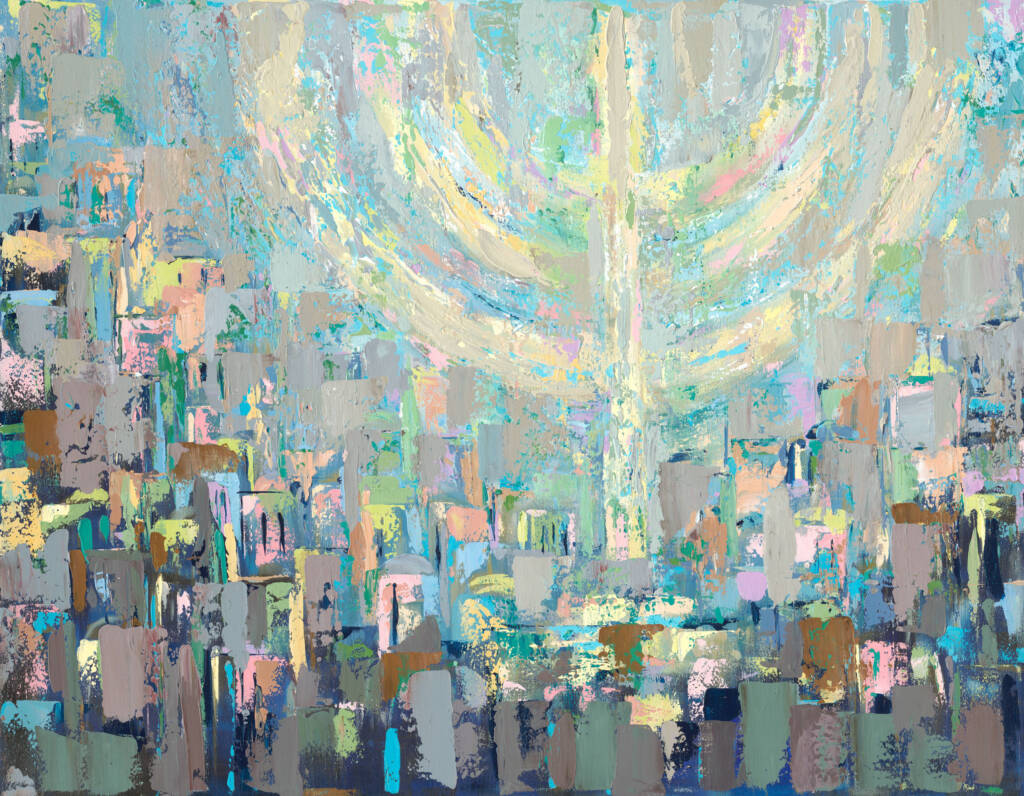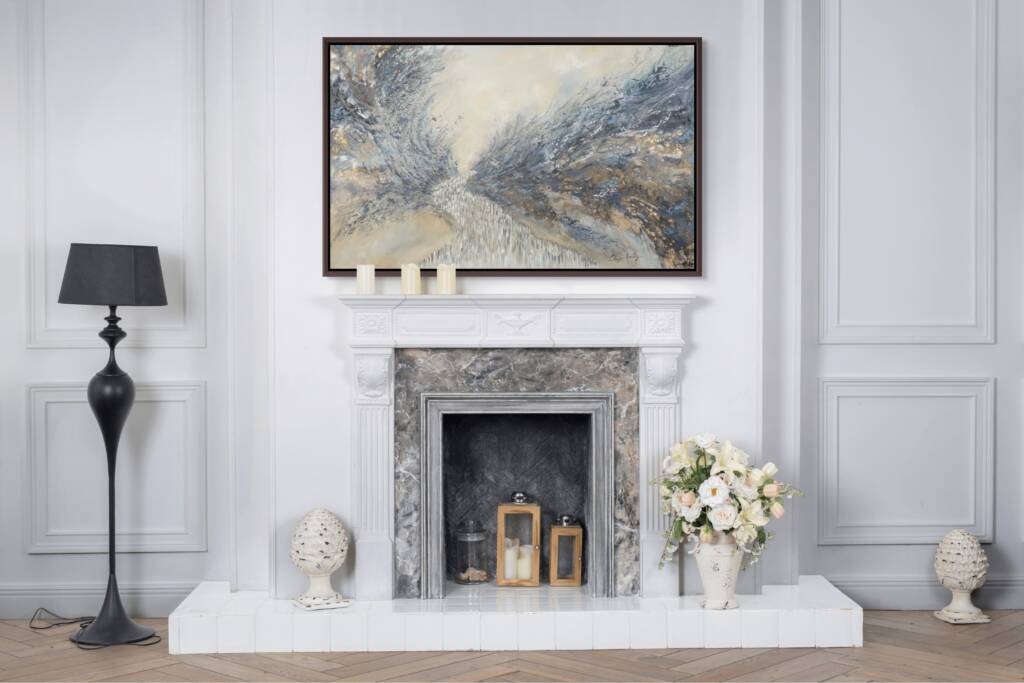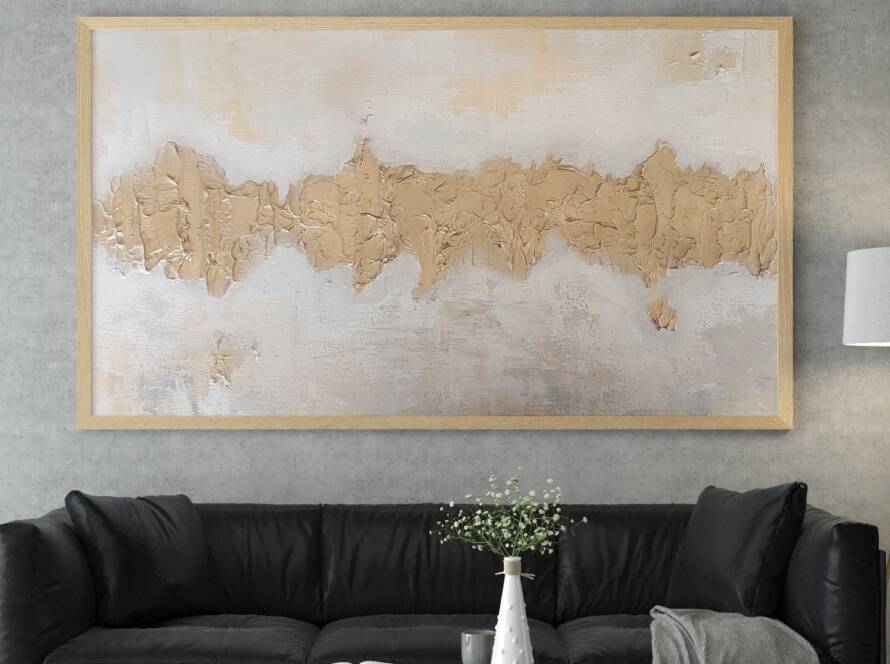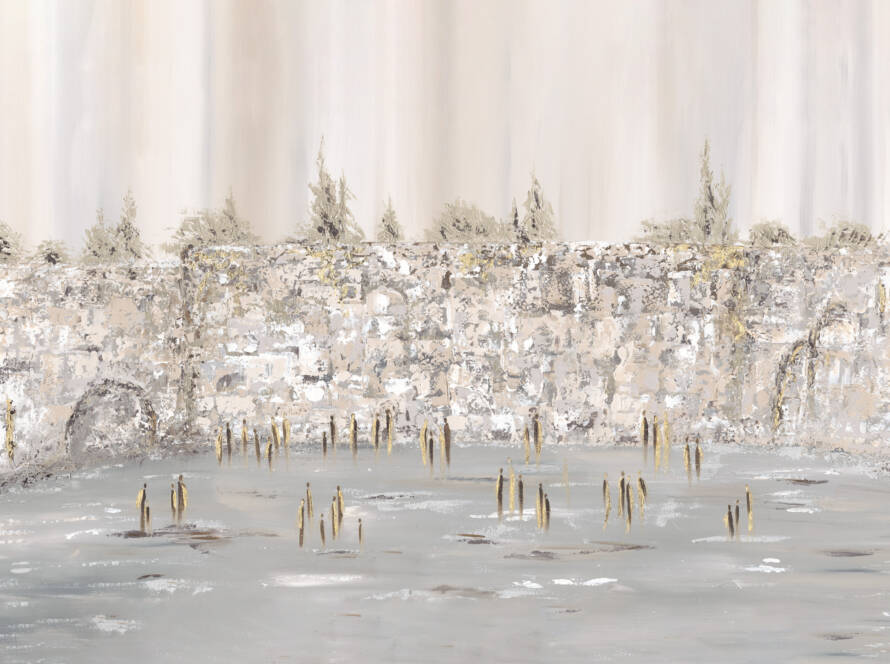For me, painting has never been just about aesthetics. It’s always been something deeper, an emotional, spiritual experience that connects me to my roots and myself. While I wasn’t trained in a formal art academy, I’ve always known the power that Jewish paintings can hold. In my own journey, color became a language, texture became intention, and every brushstroke began to feel like a prayer.
Growing up in Jerusalem, surrounded by a life built on Torah, tefillah, and tradition, art wasn’t something we talked about. Creativity lived in the margins, in the way challah was braided, in the designs of a tzniut dress, or in the quiet crafting of Shabbat table décor. But formal art? That felt like something from another world.
Still, I felt it. The need to create. And now, years later, I’ve found a way to connect my upbringing with my expression, through Jewish paintings that reflect a life of meaning, modesty, and inner beauty.
When Color Becomes a Form of Prayer
I once heard someone say that prayer is the art of speaking with the Divine, and I couldn’t agree more. But what if you don’t always have the words? What if the prayers you carry are abstract, intuitive, or quietly aching?
That’s where painting enters.
When I sit down to create, I don’t always know what will emerge. Sometimes it starts with a single feeling, a moment I’m trying to process, or a sense of gratitude that fills my heart. Other times, I find inspiration in nature, in the soft hills of Jerusalem where I run, or in the golden light of early morning. Each painting becomes a meditation. The act of choosing colors, layering textures, and allowing the canvas to speak back to me. It’s all a form of tefillah.
Jewish paintings, in this way, don’t need to depict a synagogue or the Kotel to be spiritual. They can evoke the calm of Shabbat. The stillness of candlelight. The resilience of generations. For me, spirituality is in the feeling, not just the form.
Jewish Paintings in the Modern Home
There’s something special about creating art that speaks to both tradition and today. I often hear from collectors who tell me that my work brings peace and light into their homes. That’s everything to me. Because I believe Jewish paintings should feel just as at home in a modern apartment in Tel Aviv or New York as they do in a classic, religious household.
My goal is to create paintings that are rooted in who we are as a people. As well as pieces for the lives we live today. My palette often includes warm neutrals, soft whites, blush tones, and gold leaf. These are colors that echo purity, light, and the feminine strength I see in the Jewish women around me. These aren’t random design choices. They’re part of the prayer.
In every canvas, I try to leave space. Space for breath, for imagination, and of course, space for Hashem. Because that’s what we need in our homes, especially in a world that feels noisy and crowded. Jewish paintings can be a reminder of stillness. Of connection. Of values that never go out of style.
Painting My Own Path of Teshuva and Growth
Not long ago, I was a full-time sheitel stylist, running a salon and helping women express themselves through hair and modest beauty. I loved it, but something inside me still longed for more creative freedom. When I left that world to pursue art full-time, I didn’t yet understand that I was also stepping into a deeper version of myself.
Today, painting has become my avodah. It’s my way of connecting to Hashem. It’s my personal form of teshuva. Not because I had transgressed, but because I was returning to something more true, more essential. My Jewish paintings are the result of that journey. They are quiet reflections of the life I live and the life I strive for: meaningful, grounded, spiritual, and beautiful.
Jewish Paintings as Soulful Expression
Jewish art doesn’t have to be loud or literal to be holy. In fact, some of the most powerful Jewish paintings I’ve ever seen (and created) say the most through the softest details. A muted tone. A flowing line. A shimmer of gold.
To me, painting is prayer in color. It’s a visual conversation with Hashem. It’s a form of giving thanks for beauty, for breath, and for the ability to create something that lives beyond words.
So, the next time you look at a Jewish painting, whether in a gallery, a friend’s home, or your own, I hope you feel something stir. A spark. A breath. A moment of stillness.
Because in that moment, you’re praying too.



